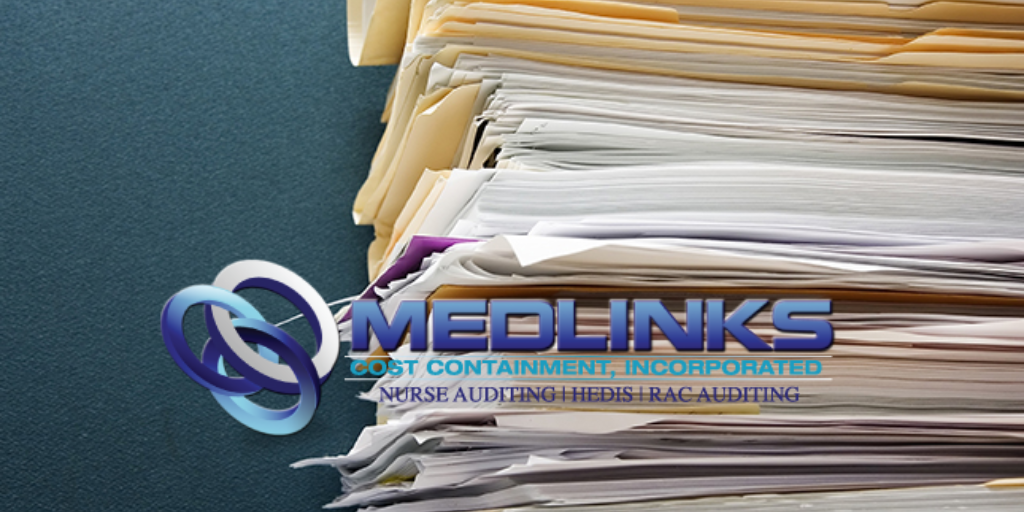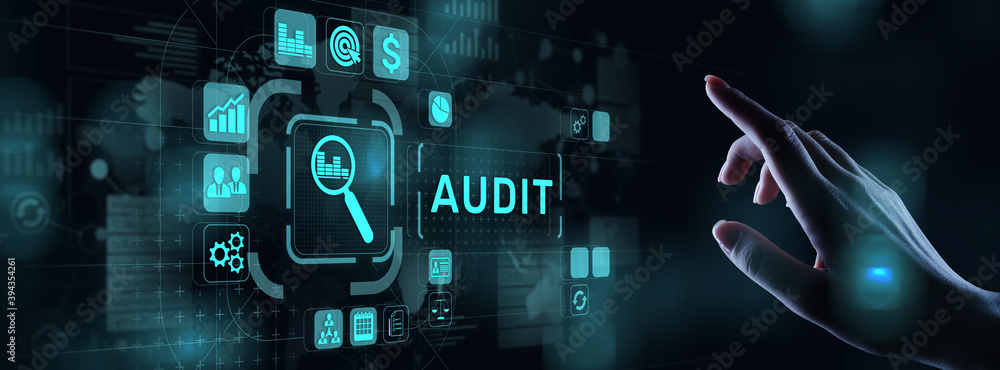Download the Denial Management Survival Toolkit
Introduction

In most cases, this paragraph should start with the alarming statistics associated with Denials in Healthcare and what you need to do to deal with this problem. We are not addressing those alarming statistics for two reasons.
- Data is always changing so let’s not quote today what will be outdated tomorrow.
- And much more importantly, for our target audience, we do not need to share statistics as Providers currently live under the onslaught of denials we are here to discuss.
Medlinks helps Providers manage Revenue Integrity, Care Quality, and Audits. We continue to innovate and are excited to announce our latest advanced technology platform, Claim WRX. We custom tailor
our solutions by integrating this platform with provider organizations and augmenting staff when needed.
Together we help successfully manage the rising onslaught of Denials and Audits facing healthcare organizations.
Denial Management for decades mostly consisted of reviews of claims against their submitted record. This was followed by authorization control measures and with value-based care, those parameters have gotten tighter and tighter for providers.
Today we are going to address the three major areas of concern:
- DRG/APC Validations/Coding
- Clinical Medical Necessity Appeals
- Audits or Claim Review
Before we dive into these specifics, let’s lay out some foundational concepts.
The Payor World
- Payors have developed “red carpet” record delivery systems to digitally receive your records, claims, and coding data.
- Payors have denial quotas that are at a remarkably high rate of denial by each nurse/coder/reviewer reviewing these records that Provider Organizations just delivered down their red carpet.
- This denial process is at least somewhat rigged in that the denial process is MUCH simpler than the appeal process.
- They have Denial Committees and Policies and Strategy Meetings. Do you?
This is the playing field we are on. Let’s lay out our own foundational strategies and then describe them carefully as we have instituted them.

The Provider World (and your 5 must-haves)
- Provider Organizations need an enforceable, action-driven, and comprehensive Internal Denial Management Policy. It’s your lucky day because we have outlined a template for you. This policy will not be enough, but we should consider it step one, in shifting your “defensive stance.” While Payors do indeed have the right to review records, you have a right to control that flow and settle these claims according to the existing contract and business capacity to respond timely.
- It’s important to have a solid working relationship with the Director of Contracting. This often-overlooked individual can be a tremendous help as Third-Party Audit Firms push the envelope in their pursuit of profitable wins against the practice, facility, or operation. Knowing all contract parameters is invaluable. Buy them lunch, they will love you for it.
- You need a Denial Management Committee that meets monthly and pursues an organized agenda to review liability pipelines, and current activity such as pending, scheduled, canceled and appealed denials. This committee needs mandatory attendance by all Department Directors, and C-Suite attendees but especially the CFO, Revenue Cycle Director, Business Office Director, and your Medical Staff Director. After all, millions of dollars are at stake here.
- Technical Tools such as Denial Management Solutions are really becoming critical. The focus by many in this industry is the flashy data reporting their tool achieves. This is incorrect and it does not address the absolute immediate need. RECOVER THOSE HARD-EARNED DOLLARS. Any technology solution (and spreadsheets do not cut it anymore) you choose, should certainly create good reporting but to keep your focus on recovery is where our final tool comes into play.
- People is the last answer. These individuals, tasked with recovering millions of “recoverable” dollars should be catered to. They need the tools, the support staff, the support of their C-Suite, a solid game plan, and to be held accountable.
The Tough Stuff
Medlinks uses Claim WRX and qualified staff to decipher and create your appeal as well as capture the “STORY” of your denial, it’s activity, and even the time spent resolving it. And so, you ask what’s in the story? The answer is the “Root Cause” and its solution. We’ll win appeals for you, and we’ll lose appeals for you, BUT we’ll always tell the “story” of what happened and why, with some strong indicators on how to fix it. This is tough work that takes People, Time, and Technology. In the end, we recover the recoverable dollars and start the decline of denials. That’s the Tough Stuff.
Coding Reviews, Clinical Documentation Improvement (CDI), and Educational Feedback
First, give these important players the respect that they richly deserve. This day-to-day detailed grind is admirable and really takes a special person to do well, day after week, after month, after year. Your Encoder at its most basic should certainly be giving you valuable data as to where your vulnerabilities lay. In conjunction with a smart coding director, these areas of vulnerability should be targets for correction under a timeline. This means your committee needs “teeth” to achieve follow-through. If not, you will achieve your goals (maybe) but in a longer much more expensive frame of time.
Coding and CDI (whether you have a formal CDI program or not) are cousins and the educational feedback loop here should be mapped for your committee in this fashion. Coding error discovered through internal random reviews or external reviews = x action. That X- action should include escalating actions, sanctions, and termination for non-compliance. These actions seen and understood, but not followed through are killing your bottom line.
Denial Management and Coding are always a custom fit process and specific targeting of issues and resolution
is possible.

Clinical Appeals, Clinical Documentation Improvement, Peer to Peer Review, Educational Feedback, Sanctions for Non-Compliance, and Utilization Review/Case Management.
Clinical Denials are much more EASILY achieved than are their Appeals. As an example, a clinical appeals nurse working for a payor may deny ten claims an hour using internal P&P, Milliman, and InterQual Guidelines, and so forth. Those individuals only need to find a “suitable” reason and then generally apply a boilerplate macro denial letter based on their firm’s efficiency. On the other side of the coin, your Appeal Nurse will need to do an extensive record review refuting the findings of the denial letter and organizing a recount of the medical record and services provided to the member. When done correctly you can “recover 70% – 80% of these dollars” but to do so requires a committed team, unencumbered by other duties. While a Payor Appeal Nurse may deny 80+ claims in a day, your Appeals Nurse can likely respond to 4 in a day.
As with coding, CDI, and more importantly, mapping your CDI process is most important. This again means, Appeals and their root cause should be fed back up the educational chain with actionable follow-up required. As an example, the appeal revolved around a lack of authorization for a day. Does that land on documentation? Case Management? Who, Why, and Where? This will all be clear at the creation of the letter which is often where it’s left. This needs acknowledgment feedback all the way through to all the correct players involved.
It is impossible to have this discussion without discussing the “problem provider,” who will not cooperate. First, the trouble these individuals cause is likely not worth their contribution, but they are always present. These individuals should have Peer to Peer reviews with their Medical Director and all the correct players explaining clearly what is wrong and what is needed to fix the issue. This should happen month after month until the issue is resolved.
In our experience twice is all it takes, depending on the strength of the Medical Director.
Audits or Claim Reviews, Clinical Documentation Improvement, Educational Feedback
Also known as Line-Item Reviews these are intended as “black and white” reviews of the claim versus the orders versus the documentation. Over the last several years this area of ‘auditing” has been subject to corruption in practice and the pitfalls here are real. You can learn more in our article here.
While Coding and Clinical Appeals are boiled down to root cause, in Auditing we boil it all down to error rate. In these reviews you will be looking at Overbilled (usually undocumented charges), Underbilled (which includes Unbilled or Late Charges), In Dispute or edits the two auditors cannot agree upon, and finally “contractually” disallowed. This is critical because outside auditors will tell you this is not allowed and that is not allowed. All
incorrect, unless it’s in your contract as disallowed it’s all allowable, AND according to CMS required. This is part
of attrition rates and is poorly understood by many in this venue. They are merely bluff expertise.

Reporting and Follow Through
You have done it! You have established an Internal Denial Management Policy (got it through your policy/forms committee) and have set your first Denial Management Committee. Around that table or present on that Zoom call are a bunch of smart people and hopefully the cream of the crop of your organization. That can be intimidating, and you have LESS THAN AN HOUR sometimes a lot less to convey your message. P.S., reports, especially in the beginning, are generally not good, so knowing the data sources and delivery model is important.
We separate like this, and the source, Coding, Appeals, and Audits does not matter or if it matters to you, a breakout by category makes sense.
Pipeline Report – The “At-Risk” dollars associated with EVERY SINGLE ACCOUNT that you or your team touch. As this process is Cost Containment, every touch is time spent and even if the request is canceled, that’s recordable savings based on your error rate.
Monthly Report of Activity with Financials – This is the previous month’s activity report and shows all accounts that have been touched or rectified, their current status, the financial picture, and if rectified their error rate as graded against the previous month. The goal will always be zero percent but under 3% is a real goal. As I am sure it is obvious that 3% will represent the very toughest fixes you have. A contractual fix, an MD who needs disciplining, a Case Management/Utilization Review department who is righteously overwhelmed. This is a high overview representing mostly volumes.
Top 10’s – Next, in order to quickly get granular, we separate by Top 10’s. The top ten are overbilled, underbilled, by payer, price, quantity, or whatever metric you like. When you have charges, denials, or codes in front of you and you Top 10 in this group, the urgent problems become immediately obvious. Since you working within a limited time and space, identify the big issues or root causes and chase those solutions first. Your audience will appreciate this approach as we are rather immediately at the bottom line and solution simultaneously.
Outliers – ALWAYS ask about outliers. If the conference room and your meeting are correctly attended, solutions often happen right here, as you’ve un-siloed these folks and through a sensible approach are showing them the way to contain these growing losses. This often the winning point of that hour, is helping directors to effectively deliver their pain points.

| THE CHALLENGE |
Follow Through Assignments
Follow-through tasks will make the tiresome process much easier. While some things cannot be solved, most can. If you are chairing this committee, it is your job to get these tasks accomplished.
Denials Committee Agenda Items that should be addressed each month
- Pipeline
- Monthly Activity
- Top 10
- Outliers
- Assignments
Denials Management Policy and Procedure
This template is intended as a guide for you to reimagine and execute your “defensive” stance in this key role of Denials Management. Remember YOU set the tone at your facility!
This P&P should be carefully vetted for its legal requirements as compared to your contractual arrangements and in many cases, you may have to include or exclude certain Payors from clauses based on contractual restrictions. When engaging with outside audit firms, send them this document for signature before you will schedule. This way everyone knows your rules for engagement.
Engagement Letter/Disclosure Authorization
Essentially this section should prompt you to define completely the elements REQUIRED in notifications of intent to audit, request for records, denial submission, and financial takebacks.
Audit Criteria/Pre-Audit Information
Here you’re looking to establish a set of guidelines for engagement. Is the claim paid and to what percentage? What is the scheduling procedure? Is there a limit to the number of requests?
Audit Fees
EVERY SINGLE TIME you can charge an audit fee, you should. Fees can be a static number, a percentage of charges, a penalty for scheduled but no-shows, and so on.
Audit Process
This is by far the most important part of your internal process. Here you should spell out EVERY SINGLE step of your expected process, from letter of intent to adjudication WITH HEAVY EMPHASIS ON REFUNDS BEING POSTED.
Special Circumstances
Third-Party Audit Firms will often “reinvent this space” with new audit types. We generally stop these with an extremely high audit fee.
Right of Refusal to Audit
You retain the right to stop an audit at any point, with or without explanation by the opposing party, and may refuse that individual and their firm access to records in the future for perceived misconduct.
For over 20 years we have been helping payors and providers manage Payment Integrity, Care Quality, and Audits. We continue to innovate and are excited to announce our latest advanced technology platform, Claim WRX We custom tailor our solutions by integrating Claim WRX, with your team and augmenting our staff when needed. Together we help you successfully manage the rising onslaught of Denials and Audits facing healthcare. Built on the Salesforce Platform, we require no IT Integration, have Military Grade Security, and a proven record of success.


